Sony LinkBuds vs. Sony WF-1000XM4: Which Sony wireless earbuds are best?
Sony’s two most distinctive true wireless models go head-to-head in our LinkBuds and WF-1000XM4 faceoff.
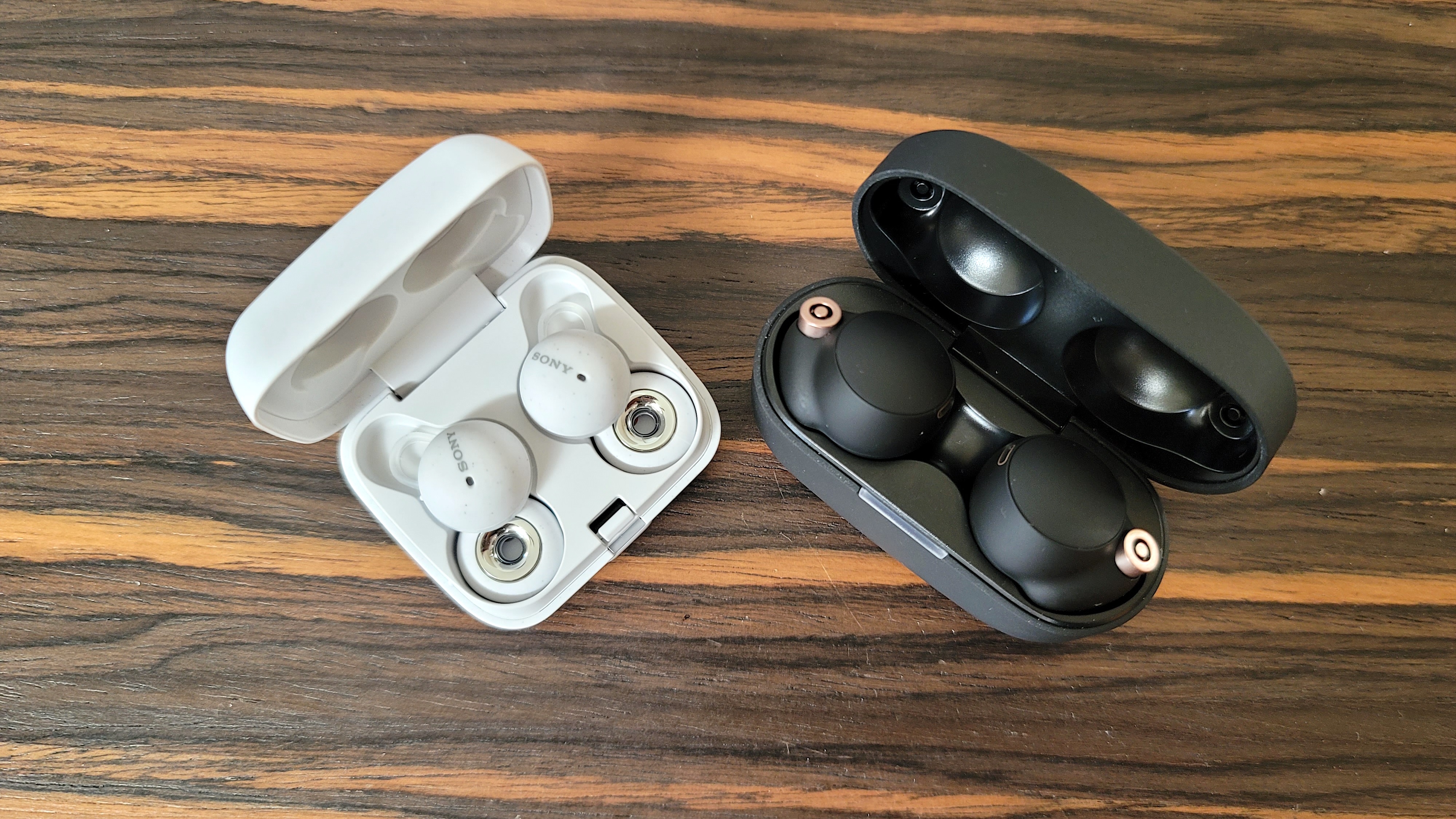
Just when we thought Sony became complacent with their true wireless releases, the tech giant pushed forward to create two of the most innovative wireless earbuds in existence: the LinkBuds and the WF-1000XM4.
After leaks surfaced online, Sony wasted no time announcing and releasing the LinkBuds. These tiny donut-shaped buds feature an open-ear design that “naturally blends ambient sound with digital sound.” The look alone is enough to pique your interest, and so is the powerful spec sheet that consists of several proprietary technologies, including 360 Reality Audio, Digital Sound Enhancement Engine (DSEE), and Sony’s V1 processor.
- Best wireless earbuds in 2022
- Read our full Sony WF-1000XM4 review
- …and our Bose QuietComfort Earbuds review
On the opposite end, you have a category leader in the Sony WF-1000XM4. These noise-cancelling earbuds acquire the hi-fi sound of their over-ear counterpart, the WH-1000XM4, and have a strikingly handsome design. All of the LinkBuds’ features are accounted for. Then come the significant upgrades to battery life and call quality. Laptop Magazine awarded this product a perfect score for many reasons.
Can Sony’s new micro sound-makers outperform the company’s best wireless earbuds to date? Our full breakdown of the LinkBuds and WF-1000XM4 has the answers.
Sony LinkBuds vs. Sony WF-1000XM4: Price
Fresh onto store shelves, the LinkBuds is listed at $179, while the slightly older WF-1000XM4 comes in at a more expensive $279. Color options are the same for both: Black and White.
The WF-1000XM4 clearly doesn’t come cheap and any pair of wireless earbuds priced higher than the AirPods Pro ($249) is asking a lot from customers. At the same time, the performance these bad boys deliver is well worth the premium. Furthermore, we’ve seen the WF-1000XM4 go for as low as $175 in the past, so the odds of it going on sale in the future remain high.
The LinkBuds likely won’t go down in price since it just came out.
Stay in the know with Laptop Mag
Get our in-depth reviews, helpful tips, great deals, and the biggest news stories delivered to your inbox.
Be sure to bookmark our headphone deals page for the latest sales.
Winner: Sony WF-100XM4
Sony LinkBuds vs. Sony WF-1000XM4: Specs compared
| Header Cell - Column 0 | Sony LinkBuds | Sony WF-1000XM4 |
|---|---|---|
| Price | $179 | $279 |
| Wireless charging case | No | Yes (included) |
| Size and weight | 0.9 x 0.5 x 0.3 inches, 0.14 ounces | 1 x 0.8 x 0.8 inches; 0.2 ounces |
| Battery life | 5.5 hours (ANC on); 17.5 hours (charging case) | 8 hours (ANC on), 12 hours (ANC off), 24 hours (with charging case), 36 hours (with charging case and ANC off) |
| Processor | V1 | V1 |
| Connectivity | Bluetooth 5.2 | Bluetooth 5.2 |
| IPX Rating | IPX4 | IPX4 |
| Special features | 360 Reality Audi0, Adaptive Volume Control, Alexa integration, customizable EQ, Digital Sound Enhancement Engine (DSEE), Spotify Tap, Speak-to-chat functionality, Sony wireless transmitter compatibility | Active noise cancellation, transparency mode, Speak-to-Chat, customizable EQ, 360 Reality Audio, DSEE Extreme upscaling, LDAC, Bluetooth 5.2, tri-digital assistant support (Alexa, Google Assistant, and Siri), quick charging |
Sony LinkBuds vs. Sony WF-1000XM4: Design
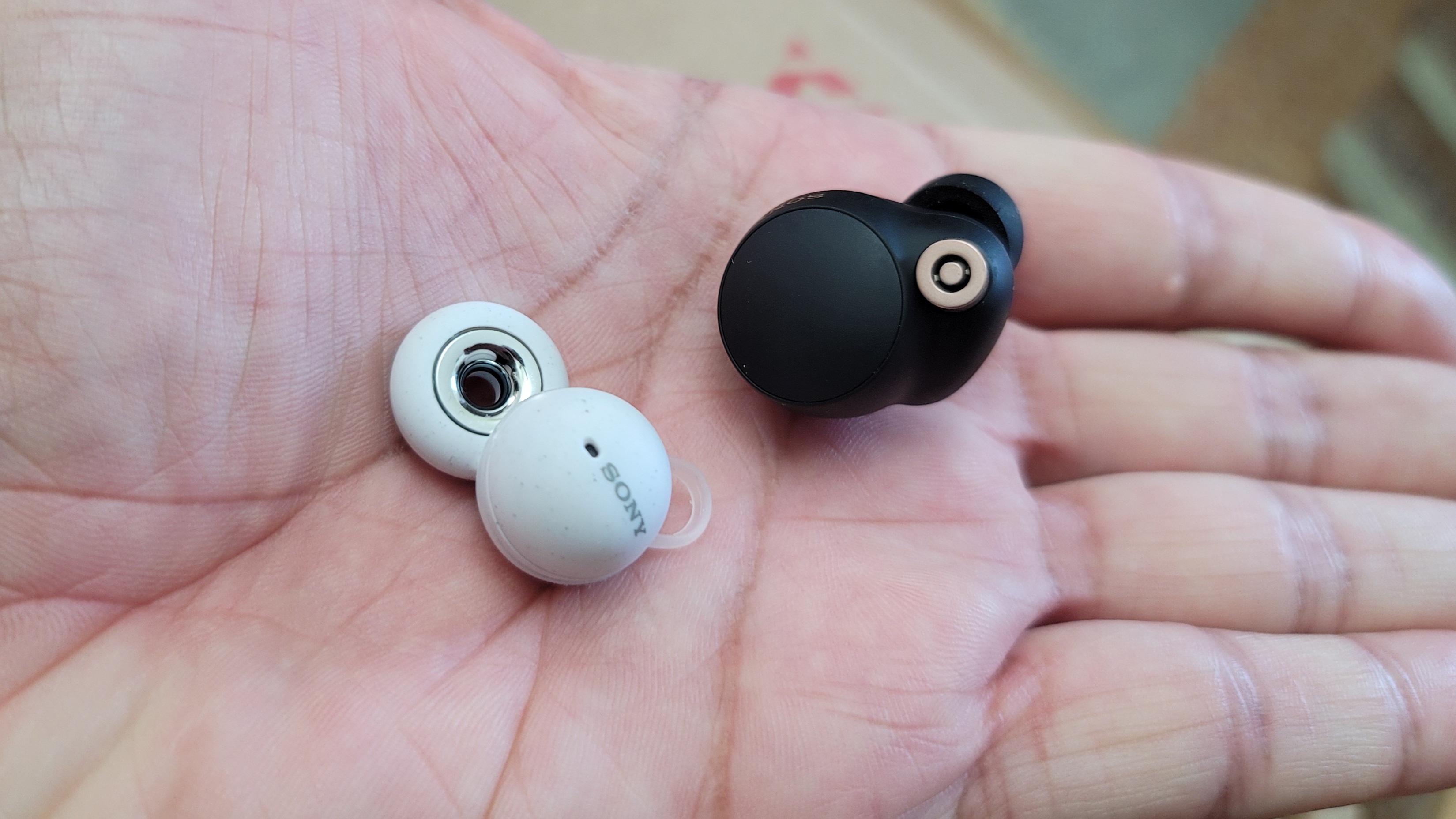
It’s hard to vote against the LinkBuds’ ultramodern aesthetic over the WF-1000XM4’s sleek and sophisticated appearance. Each bud has two circles, one that houses the circuitry and the other a thin speaker unit. The silicone arc wings mold easily into the cymba, though they don’t provide much stability, and the buds press up against the concha causing discomfort after an hour of use.
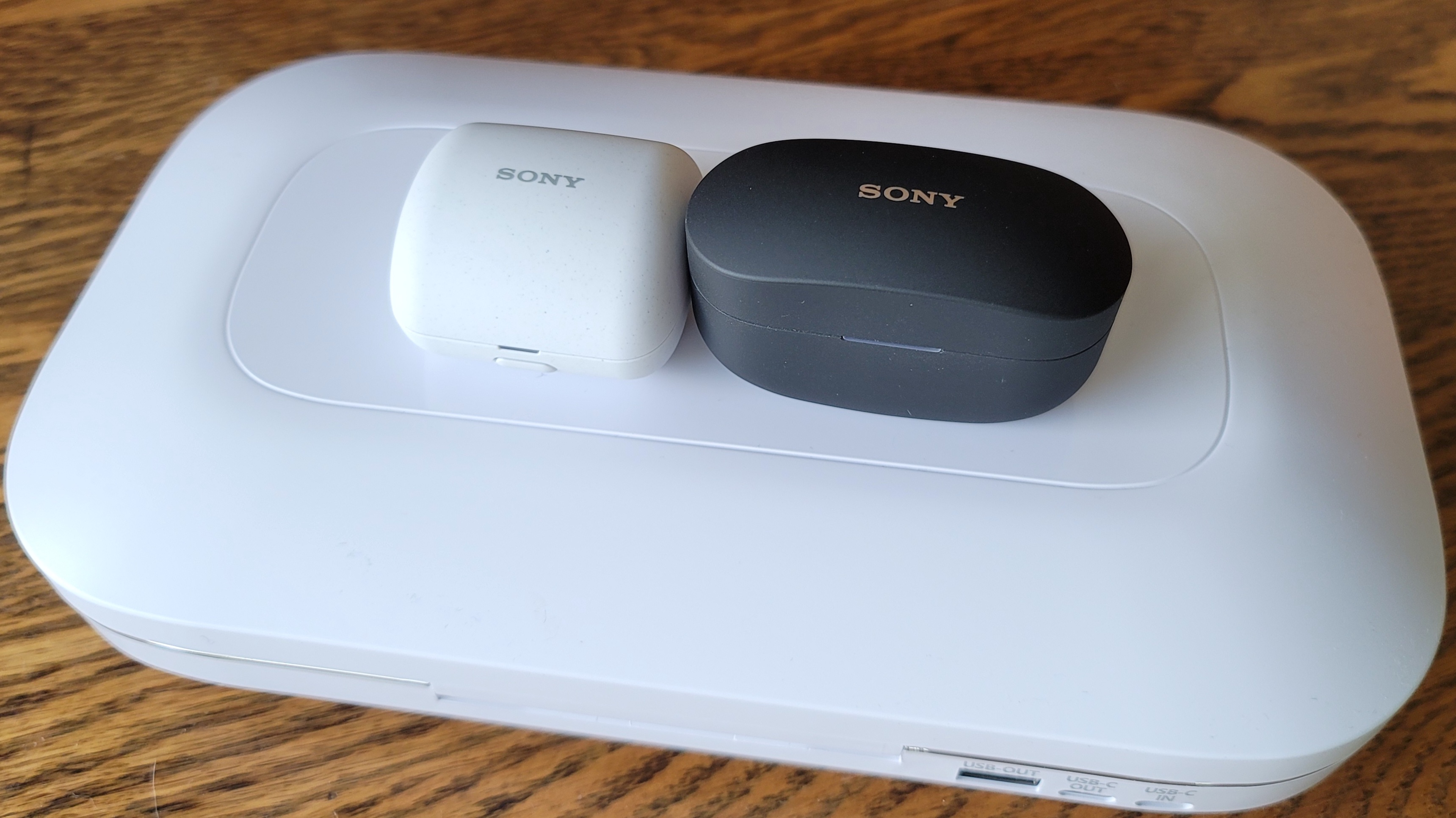
We love the redesign treatment Sony gave the WF-1000XM4. Out goes the wide and elongated silhouette of past Sony wireless earbuds and in comes a traditional oval design with nice details like a copper ring at the edge that doubles as the ANC mic housing. The embossed logo and mic placement are distinctive touches, too. These buds come IPX4 sweat and water-resistant, like the LinkBuds, and they also have similar comfort and fit issues.
Each charging case is small and sleek. The WF-1000XM4 case is bigger, but it won’t create an unflattering bulge or weigh down your pockets. Neither will the LinkBuds' mini charging case, which is surprisingly durable and displays the buds beautifully when opened.
Winner: Sony LinkBuds
Sony LinkBuds vs. Sony WF-1000XM4: Controls

This is one category where the LinkBuds and WF-1000XM4 are equally great. Touch gestures, motion detection, and voice activation make up the control schemes for both models. You even get convenient features like Spotify Tap to instantly access the streaming app directly from the buds.
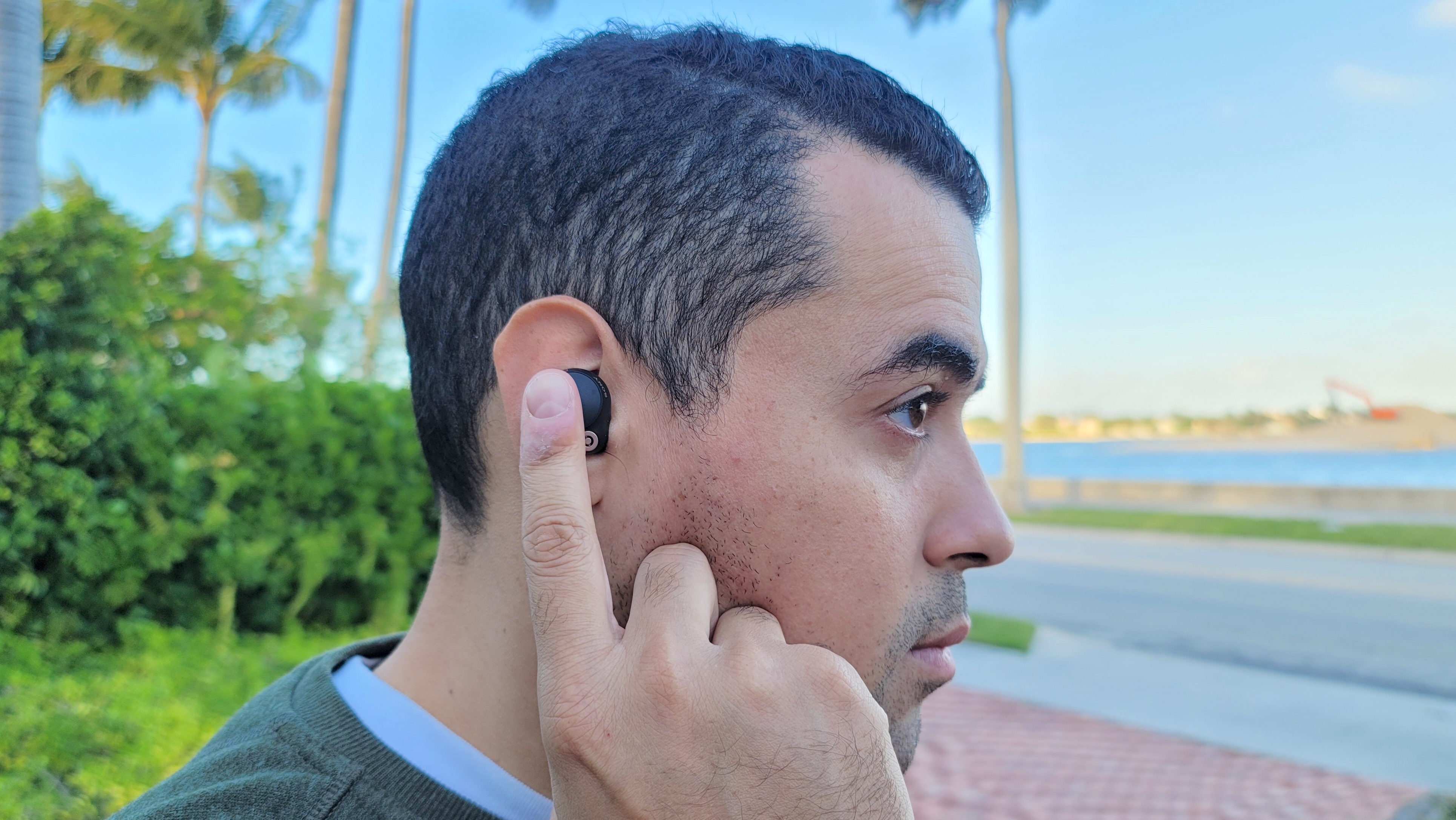
The touch sensors are highly responsive to taps. Alexa integration works well, firing up the digital assistant when speaking the wake word phrase. Google Assistant and Siri are also compatible and operate smoothly. Auto-pause is precise when taking off the earbuds and Speak-to-Chat does the same when recognizing your voice. Quick Attention is exclusive to the WF-1000XM4 and drops volume down to 10 percent, so you can communicate clearly and keep the buds on.
Winner: Tie
Sony LinkBuds vs. Sony WF-1000XM4: Audio Quality
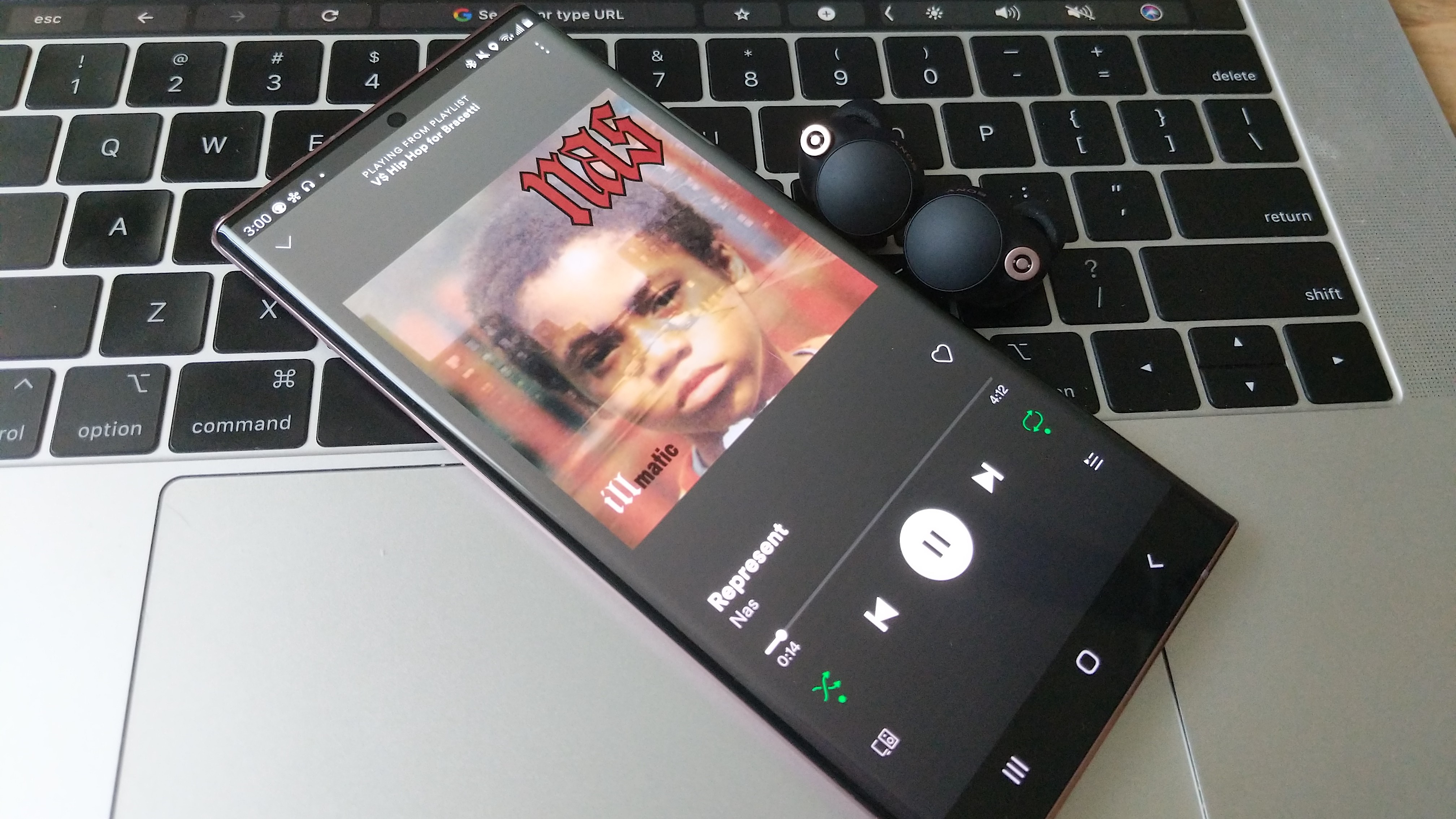
Only one of these comes with flagship sound. If your guess is the WF-1000XM4, take a bow. The 6mm drivers produce deep, impactful bass paired with dynamic highs and lows. A customizable EQ with several well-engineered presets is available in the companion app. LDAC codec support gives you hi-res audio when listening to tracks on compatible streaming services (e.g., Tidal, Deezer), plus DSEE boosts clarity on lo-fi recordings. 360 Reality Sound also creates an immersive soundscape that makes you feel like you’re in the recording studio or at a private concert.
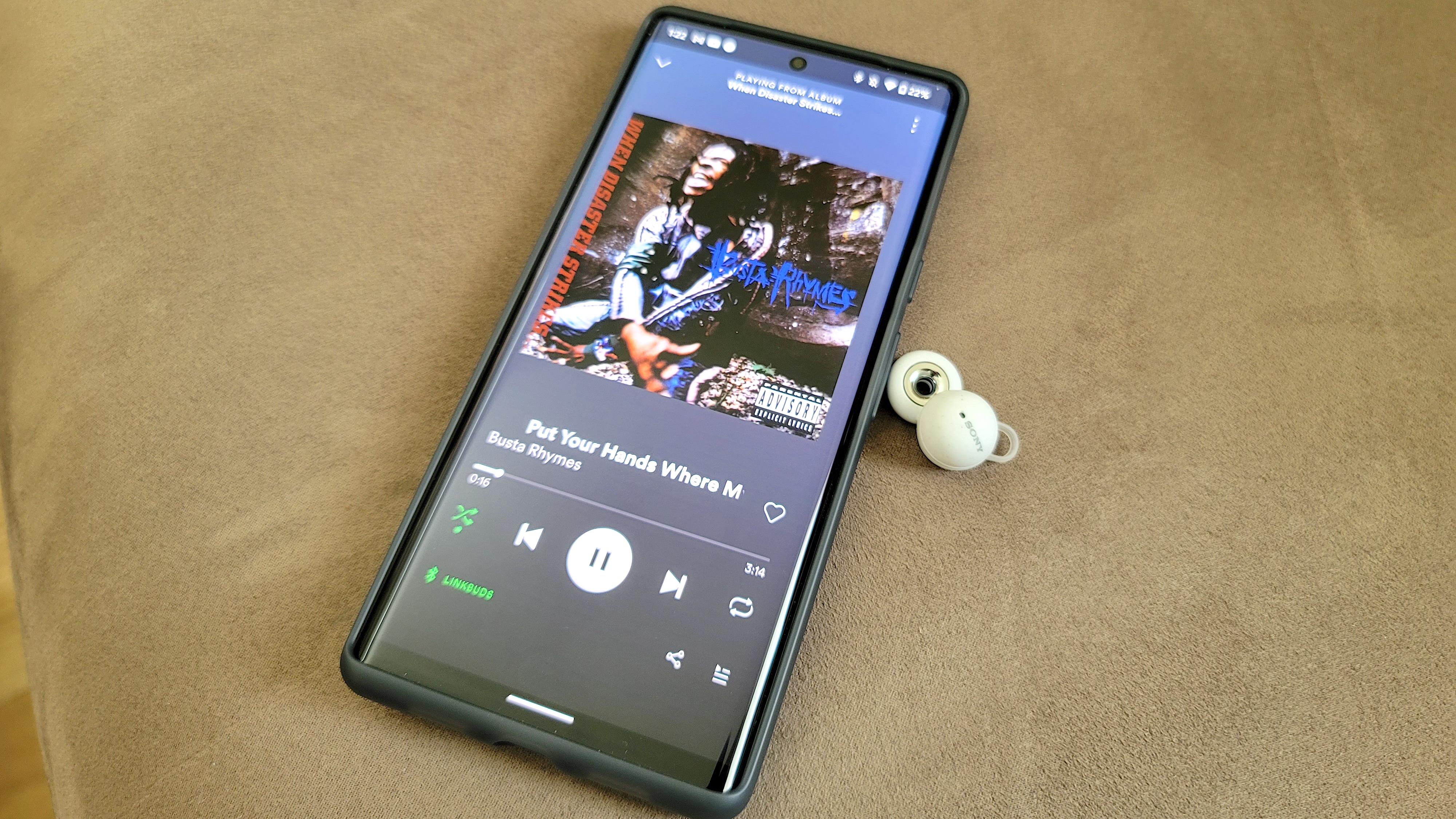
Yes, the LinkBuds comes with the same audio features (minus LDAC) and deliver crisp, neutral sound. It also lets in too much ambient noise, making it impossible to hear recordings the way musicians and engineers originally intended. Dull bass performance isn’t something we’re accustoming to hearing on Sony earbuds. Switching to the Bass Boost EQ doesn’t help. You can turn on DSEE to raise audio quality a smidge, and spatial audio performs decently, but you won’t enjoy it much unless listening in completely silent settings.
Winner: Sony WF-1000XM4
Sony LinkBuds vs. Sony WF-1000XM4: App and special features
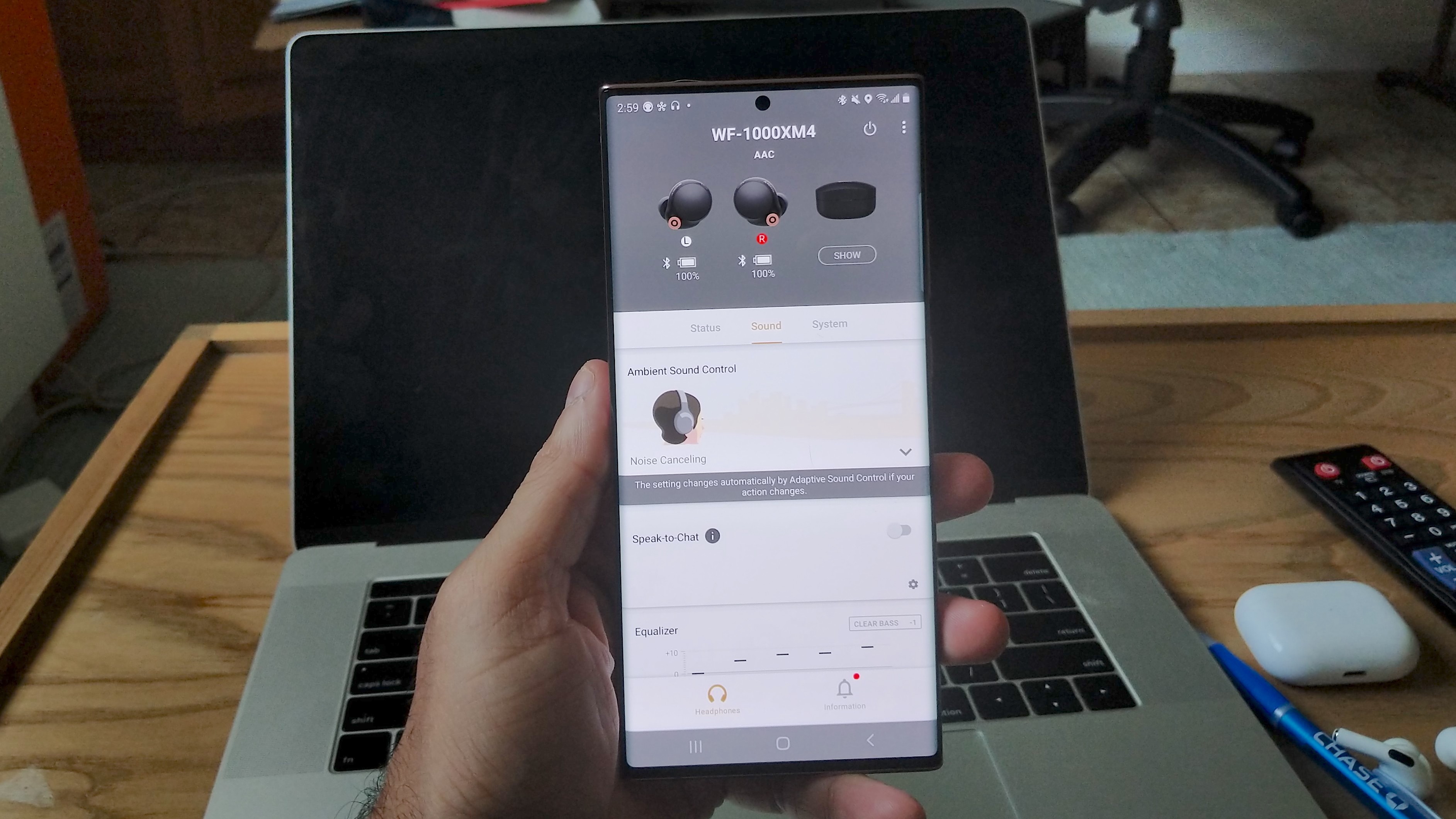
The Sony Headphones Connect app works with either model. It offers up many of the same features including the aforementioned 360 Reality Audio, built-in Alexa, DSEE, EQ, Spotify Tap, and Speak-to-Chat. Add Bluetooth 5.2 and Google Fast Pair to the list.
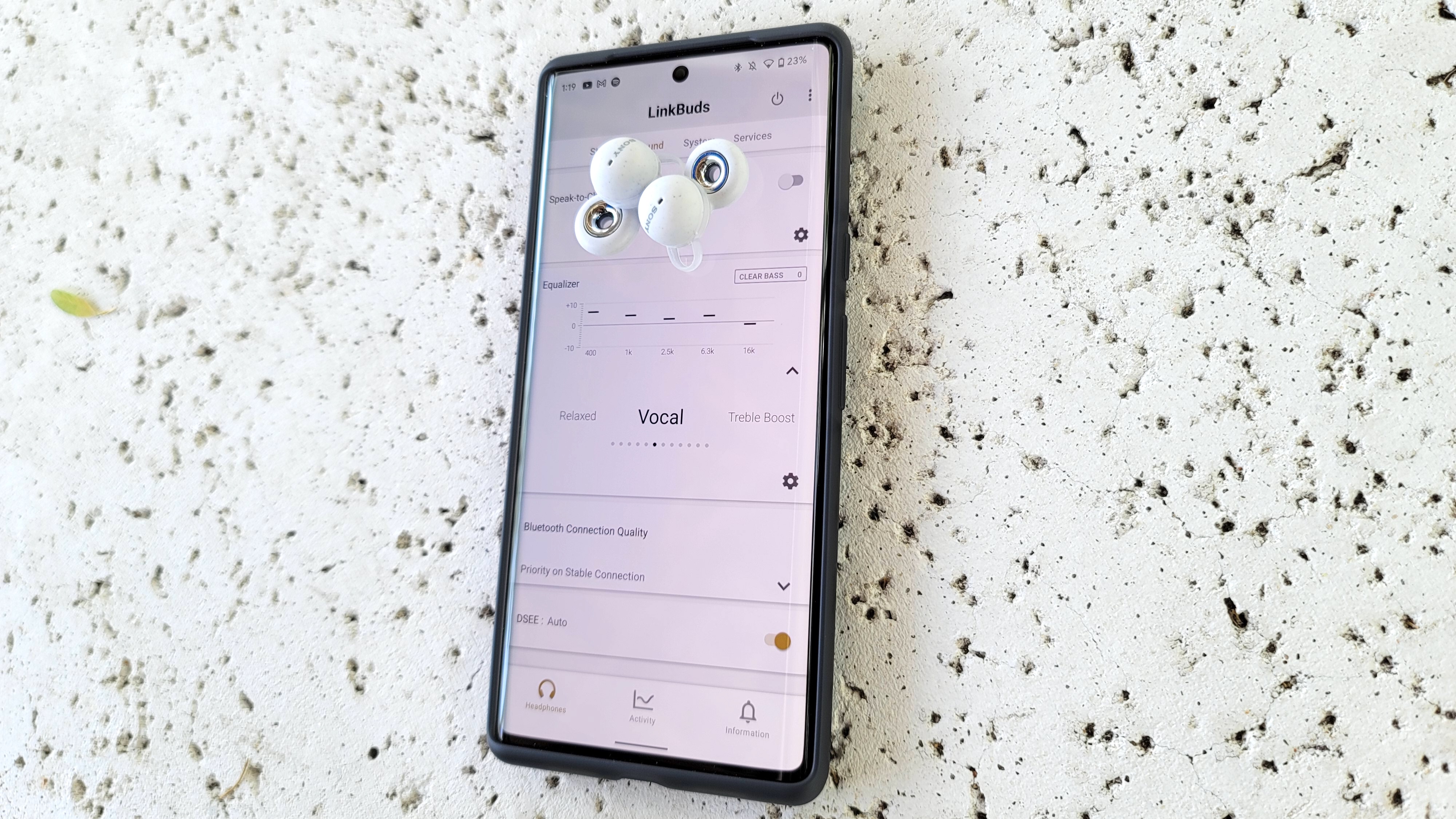
As the top model, the WF-1000XM4 receives more high-end features. The biggest is active noise cancellation, which is some of the finest in the category and blocks out a large portion of external sounds for peaceful listening. Not having adjustable ambient sound isn’t a loss for the LinkBuds since the buds naturally let in surrounding sounds. However, not having LDAC stings.
Winner: Sony WF-1000XM4
Sony LinkBuds vs. Sony WF-1000XM4: Battery life
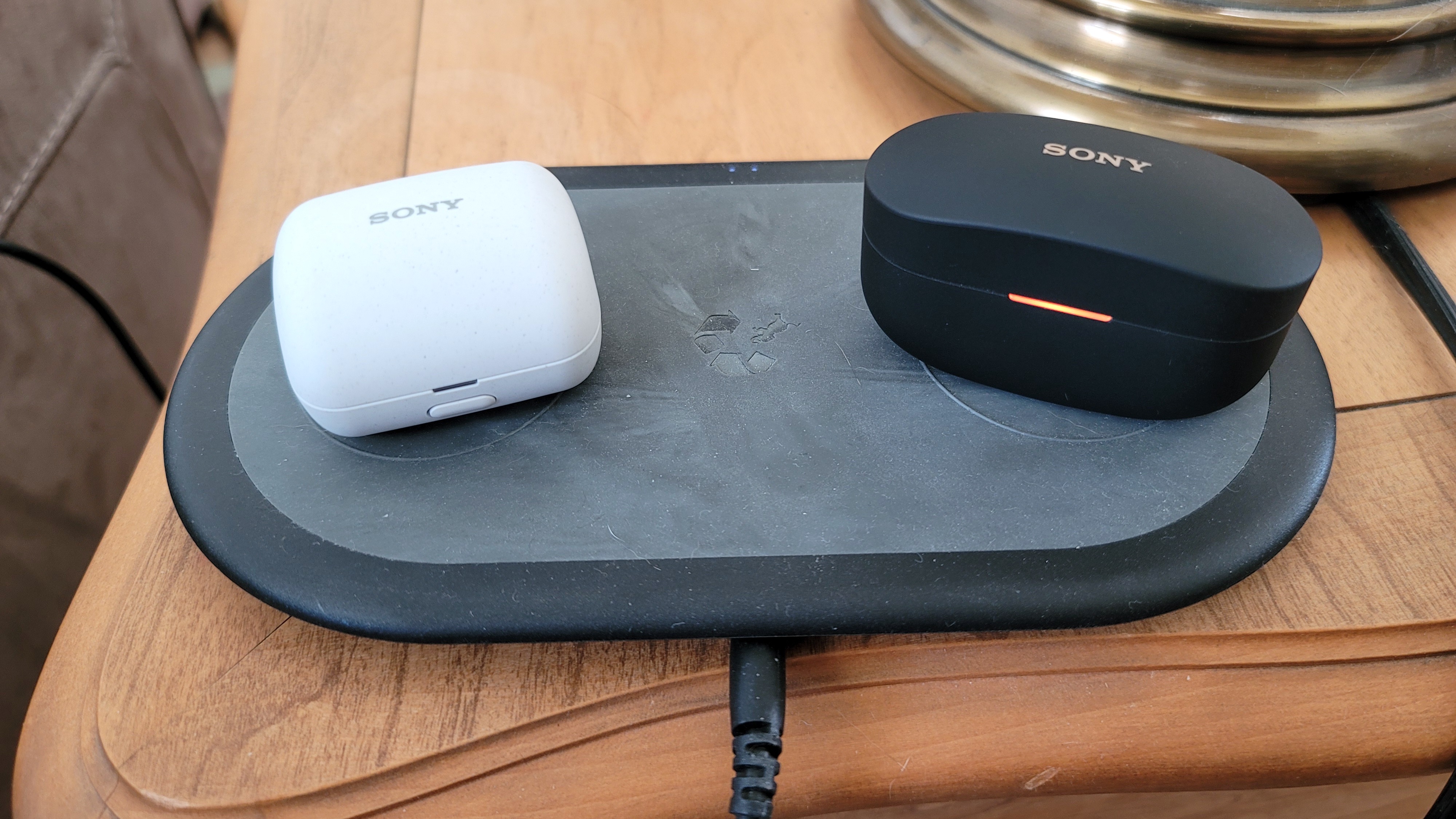
The WF-1000XM4 has the longer playtimes. Sony rates it at 8 hours with ANC on and 12 hours with ANC off. High volume and special features drop these playtimes by about 30 to 45 minutes, and that still leads to more playtime than the AirPods (5 hours). The charging case holds between 24 to 36 hours, supports wireless charging, and gets you 1 hour of use on a 5-minute quick charge.
The LinkBuds is limited to 5.5 hours per charge. Sure, it’s more than the AirPods Pro (4.5 to 5 hours), but the charging case only holds 3 extra charges (up to 17.5 hours). There is no wireless charging, and the quick-charging technology is weaker; 10 minutes plugged into the USB-C cable generates 90 minutes of use.
Winner: Sony WF-1000XM4
Sony LinkBuds vs. Sony WF-1000XM4: Call quality

One word to describe the LinkBuds' call quality is “exceptional.” OK, so it can be tough hearing people on the opposite end when chatting in very loud settings (one of the pitfalls of an open design). That isn’t the case when taking voice and video calls in low-traffic environments. On top of that, the fantastic noise neutralization these buds demonstrate allow for people on the opposite end to hear you clearly and distraction-free. Of the 20 calls made to family and friends, only two people complained about clarity.
Voice and video calls also sound great on the WF-1000XM4, thanks to Sony’s Precise Voice Pickup Technology with beamforming mics. The buds deliver crisp audio, though we did find the Automatic Wind Reduction feature to be less effective than the LinkBuds' wind resistance.
Winner: Sony LinkBuds
Winner: Sony WF-1000XM4
Nothing is touching the Sony WF-1000XM4 right now. The combination of hi-fi sound with spatial audio, strong ANC, lengthy playtimes, and one sexy design is just too much for the LinkBuds to compete with. Everything sounds excellent on these buds and technologies like DSEE and LDAC elevate the listening experience. Its only flaw is call quality, which is an improvement from the past version, but not top tier.
| Header Cell - Column 0 | Sony LinkBuds WF-L900 | Sony WF-1000XM4 |
|---|---|---|
| Value (5) | 3 | 4 |
| Design (10) | 9 | 9 |
| Comfort and fit (10) | 6 | 8 |
| Controls (10) | 9 | 9 |
| Audio quality (25) | 15 | 24 |
| App and special features (20) | 15 | 18 |
| Battery Life (10) | 5 | 9 |
| Call quality (10) | 8 | 6 |
| Total Score (100) | 70 | 87 |
We applaud Sony for trying something bold and new with the LinkBuds. The concept sounds intriguing on paper, but unless you’re concerned about what’s happening around you 24/7, it’s a hard pass for anyone who wants to consume their audio content in a more sensible way. That doesn’t take away from the LinkBuds' ingenuity because the design looks cool and some of its functionality (controls, call quality) surpasses expectations. The real question is are you willing to deal with constant distractions every time you press play? Probably not.
Alex Bracetti writes about all things related to audio at Laptop Mag. From insightful reviews of Sony earbuds to hands-on experience with the Beats Studio Pro, Alex covers everything you need to know in order to buy the best pair of headphones or earbuds. Alex has also written about speakers and audio apps. Outside of Laptop Mag, Alex's work has appeared in our sister site Tom's Guide.
